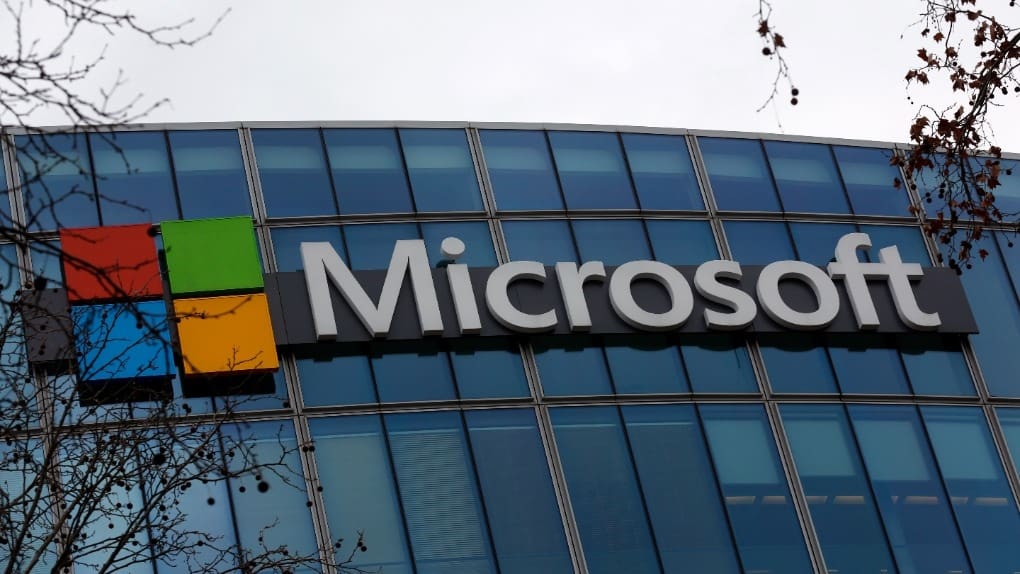Global Courant 2023-05-13 01:02:00
How much work do you actually do in a day?
A new report from Microsoft shows that employees are spending more time on emails, meetings and chats than do the rest of their jobs – suggesting that communication takes up more than half of employees’ time.
The results are based on a survey of employees across industries around the world, as well as international usage data collected from the company’s Microsoft 365 apps, such as Teams, Outlook, Word, Excel, and PowerPoint.
The report, published by Microsoft on May 9, says the constant influx of data, emails, meetings and notifications is beyond our ability to process that information.
Microsoft says people have three times as many meetings and calls per week (192 percent more) than in February 2020.
Nearly two-thirds of people (64 percent) said they struggle to maintain the time and energy it takes to do their jobs, and those same people are 3.5 times more likely to struggle with innovation and strategic change, according to the report. think.
In addition, 60 percent of leaders said “a lack of innovation or breakthrough ideas in their teams is a concern.”
Microsoft calls the idea that employees can’t keep up with emails, meetings, and chats “digital debt.” The report says people spend more time trying to “get out of the red” and getting caught up in communication than actually doing their jobs.
“There are only so many minutes in a day – and every minute we spend managing this digital debt is a minute not spent on the creative work that leads to innovation. In a world where creativity is the new productivity, digital debt is more than an inconvenience: it has an impact on business,” the report said.
Sixty-eight percent of respondents said work communications such as emails, meetings and chats usually get in their way during the workday and they don’t have enough uninterrupted focus time to do their job. Most people (62 percent) said it takes too much time to find information they need at work.
Microsoft says the average employee spends more than half (57 percent) of their time communicating and 43 percent of their time creating documents, spreadsheets, and presentations.
The top 25 percent of heavy email users spend 8.8 hours a week in their inboxes, and the top 25 percent of people heavily involved in meetings spend 7.5 hours a week on a video or audio call .
Survey respondents also cited “inefficient meetings” as the biggest obstacle to their daily productivity. Lack of clear goals, having too many meetings, feeling uninspired and not easily finding the information they need round out the top five productivity disruptors, according to the study.
Most people (58 percent) said they find it hard to brainstorm during a virtual meeting, while 57 percent said it’s hard to catch up if they join a meeting late. More than half (55 percent) of respondents said the next steps are unclear at the end of a meeting, while 56 percent said it’s difficult to summarize what happened during a meeting.
But when it comes to strategies that could reduce the time spent in these meetings, just over one in three people (35 percent) said they think they would be missed if they didn’t attend, while most respondents said meetings are worthwhile because they “will receive information that will help (them) do (their) job better.”
Microsoft isn’t the first company to suggest that excessive meetings hinder work productivity. Big changes at Shopify earlier this year recognized an increase in meetings during the pandemic and significantly reduced calls in an effort to free up its employees.
HOW DOES AI INFLUENCE THE WORKDAY?
In March, Microsoft announced it would integrate the AI technology behind ChatGPT into its developer tools, which will allow people to create applications with little to no coding.
Amid the rise of generative AI, there is concern that the software could replace humans in the workplace.
According to Microsoft, more people are excited about AI tools to “lighten the weight of work” than they are afraid of losing their footing to AI.
Just under half (49 percent) of respondents said they were concerned about AI taking over their jobs, while 70 percent said they would delegate as many tasks as possible to the software to reduce their workload.
Microsoft says 76 percent of people would use AI just fine for administrative tasks, 79 percent said they would use the software for analytical work, and 73 percent said they would use it for creative work. Most people also said they would use AI to find the right information they need (86 percent), summarize their meetings (80 percent), and plan their day (77 percent).
According to the report, most people believe AI can “enhance creativity” by coming up with ideas for their work (76 percent) and editing their work (75 percent). Microsoft also says that if people are more comfortable with AI, they’re more likely to see that it can help throughout the workday. A vast majority (87 percent) of respondents who said they were very familiar with AI said they would use AI for creative aspects of their work.
Employers are twice as interested in using AI to increase productivity rather than reduce their workforce, the report said. Leaders told Microsoft that “reducing the workforce was last on the list” of what they would value from using AI in the workplace.
“After ‘increasing productivity’, leaders’ main hopes for AI are to help employees with necessary but repetitive tasks, increase employee well-being, eliminate time employees spend on low-value activities, improve employee capabilities, and increase the pace of work. of employees accelerate. ”, said Microsoft.
While Microsoft’s research results appear to complement its investment in AI technology, others, including the so-called Godfather of AI, are less convinced of the concept, issuing warnings such as “smart things can outsmart us.”
LOOKING TO THE FUTURE
When asked how they think AI will change the workplace by 2030, 33 percent of people said work could be done in half the time, about a quarter said they would understand the most valuable ways to spend their time (26 percent) and energy (25 percent), and 23 percent said they would never take in unnecessary or irrelevant information again.
Microsoft adds that adapting to using AI as a “co-pilot” at work will require knowledge of the software in the future. The tech giant says the use of AI will be “as inherent to how we work as the internet and the PC.” Leaders told Microsoft it’s critical that employees learn how to write good prompts, evaluate creative work, and check for bias to properly leverage AI.
Three in five respondents said they don’t have the right capabilities to do their jobs, and Microsoft believes AI can fix that.
“AI will open new avenues for learning, and success depends on leaders equipping employees for an AI-powered future,” the company said.
More than four in five leaders (82 percent) said their employees need to learn new skills to be ready for AI in the workplace, and AI appears to be on the rise. Microsoft says there are 33 times as many posts on LinkedIn mentioning generative AI and Generative Pre-trained Transformer (GPT) than a year ago. As of March 2023, Microsoft says that “the share of US jobs on LinkedIn that mention GPT is already up 79 percent year-over-year.”
The tech giant appears to be betting heavily on AI being integrated into the workplace. The company says, “AI won’t just ‘fix’ work, it will create a whole new way of working.”
METHODOLOGY
The Work Trend Index survey was conducted between February 1, 2023 and March 14, 2023 by an independent research firm, Edelman Data x Intelligence, of 31,000 full-time or self-employed workers in 31 markets. This survey was 20 minutes in length and conducted online, in the English language or translated into a local language in different markets. Thousands of full-time employees were surveyed in each market and the global results were aggregated into an average for all responses. Each market is weighted evenly within the global average. Each market was sampled to be representative of the full-time workforce across age, gender, and region; each sample included a mix of work environments (in-person, remote versus non-remote, office versus non-office environments, etc.), industries, company sizes, tenures, and job levels.
Markets studied include:
Argentina, Australia, Brazil, Canada, China, Colombia, Czech Republic, Finland, France, Germany, Hong Kong, India, Indonesia, Italy, Japan, Malaysia, Mexico, Netherlands, New Zealand, Philippines, Poland, Singapore, South Korea , Spain, Sweden, Switzerland, Taiwan, Thailand, United Kingdom, United States and Vietnam.








